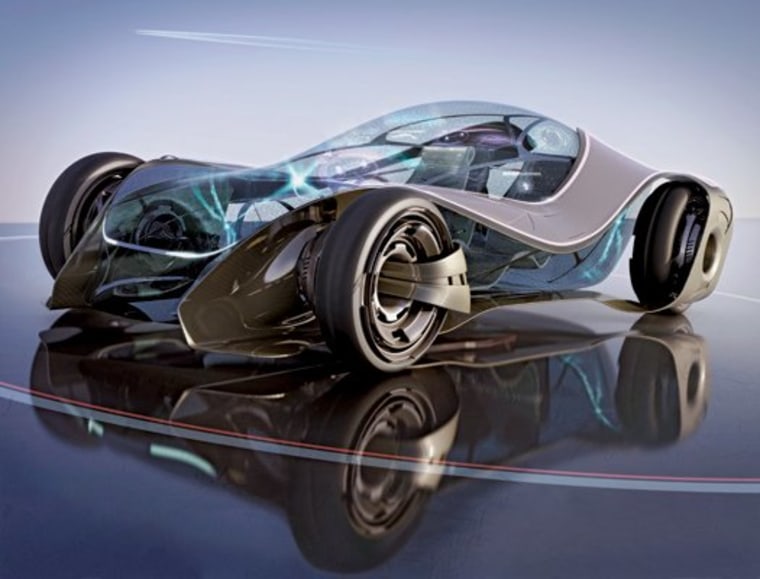The BMW Track Trainer is a robot car: a fully autonomous automobile capable of racing the Mazda Raceway Laguna Seca in California's Monterey County (or any other track it's been programmed to run) at the limit of traction, mere seconds off the time a professional would run in the same model.
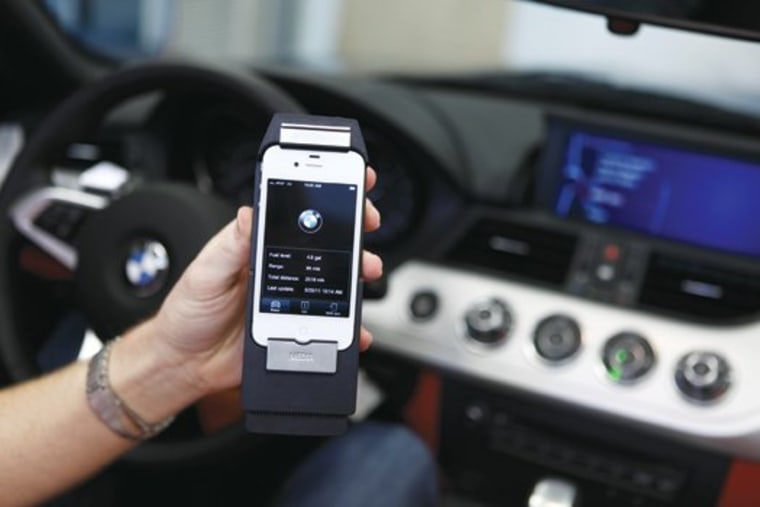
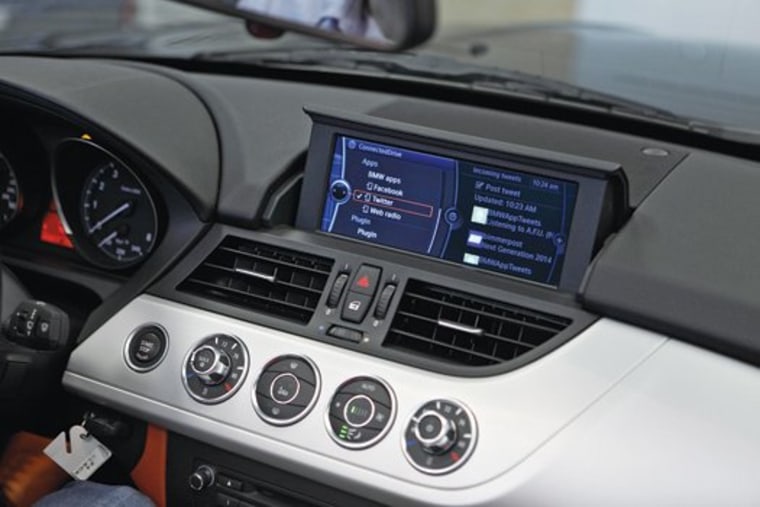
BMW uses it to train drivers by showing them how the perfect racing line feels from the driver's seat and by providing real-time feedback, with corrections, once they decide to take over the controls themselves.
But the car is also a showcase for BMW's Driver Assistance System, a series of radar and GPS sensors that work in concert with computer-operated steering, brake and power systems to achieve what BMW describes as "highly autonomous driving."
Click to get an inside look at Silicon Valley's automotive innovations.
Since 1978, when microprocessors were first installed in the trip odometer of a Cadillac Seville, the number of chips in the average automobile has grown such that cars now contain anywhere from 50 to 200 processors and a mile of wiring. The increasing prevalence of hybrid and electric cars is accelerating that trend; the plug-in electric Chevrolet Volt, for example, requires 10 million lines of code, 2 million more than it takes to run a Boeing 787.
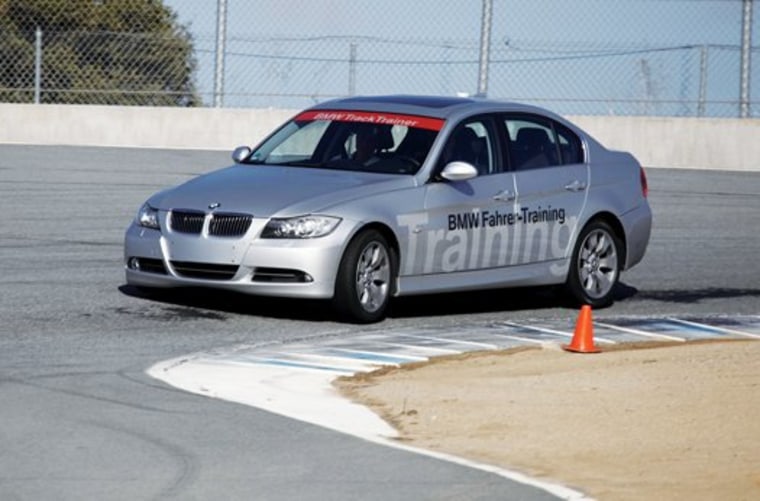
So carmakers are coming to Silicon Valley, where code is king.
Mercedes-Benz opened a technology center here in 1995, BMW in 1998, Volkswagen in 1998, Toyota in 2001, General Motors in 2007 and Renault-Nissan in the past year — all in large part to tap the skills of the designers and developers and engineers and who have so ably sustained Google, Apple and Facebook.
Include homegrown start-ups Tesla Motors, Mission Motors and the autonomous car division at Google itself, and the result is a sort of Detroit West, where California engineers continue to devise new ways to make powerful, affordable, easy-to-use computers — but now they also devise new ways to make them move very, very fast.
Exactly how I felt about all this is something I was chewing on when the Track Trainer crested the hill that leads into Laguna Seca's infamous "corkscrew." I had to trust that this robot racecar would remember how to negotiate one of the trickiest and most dangerous corners in the world, a hard left followed immediately by a hard right on a stretch of track that drops five and a half stories in 450 feet.
Cresting the hill, the car managed not to panic and brake too soon, as humans tend to do. In fact, as we plunged into the turn, I thought for one terrifying moment that the car wasn't going to brake at all — until it did, with perfect timing.
As we safely exited, I realized I'd just hitched a brief ride into the future.
Computer processors regularly take control of the braking, steering and acceleration in many current high-end production models — such as when a stability-control system prevents drivers from spinning out on a wet road — and these same high-end cars are also increasingly encrusted with sensors (cameras, radar, LIDAR, infrared, ultrasonic) that gather data to feed those processors. The car will eventually know where it is and where it is going, and perhaps even how it will get there.
Within a few years, differential GPS, which uses fixed ground stations to correct inaccuracies in satellite signals, will allow a car to reliably determine its location to within a few inches.
Put these together, and pretty soon you have a Track Trainer that requires no engineer riding shotgun. It will be parked in your garage.
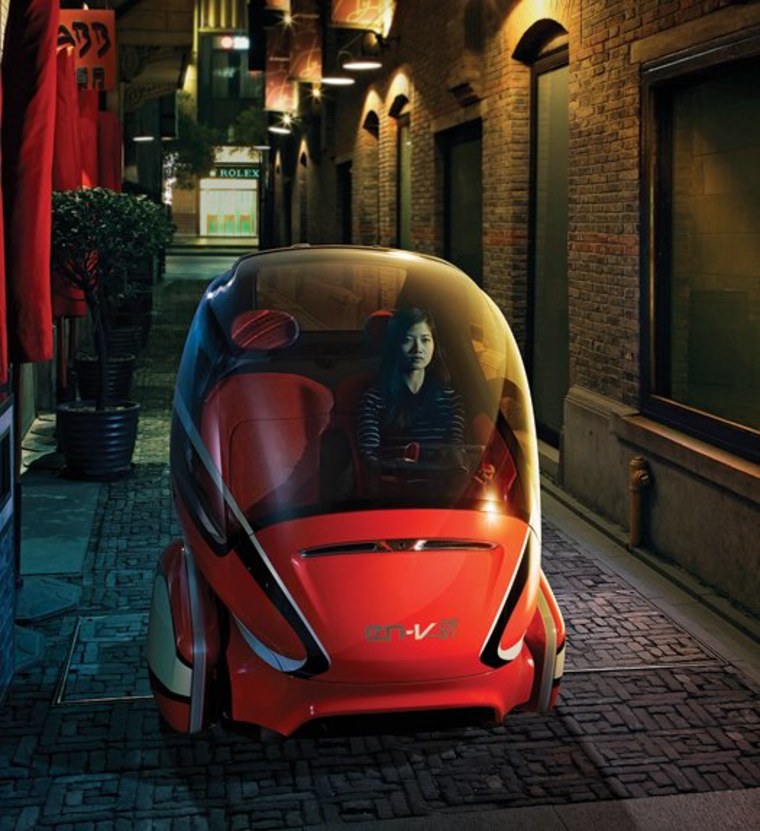
Cars are not especially good at learning right now, but engineers are working on that too.
Rob Passaro has worked at BMW's Group Technology Office in Silicon Valley since it opened in 1998, when the auto industry's idea of an IT revolution was a car that could play MP3s.
When I met him in the "office's" spotless garage, though, he quickly explained that his primary mission was to "open the car as a platform for applications." Cars are the most thoroughly computerized machines most of us will ever buy, he said, but unlike phones or laptops, they are nearly impossible to upgrade — you pay your money and then drive the thing unchanged until it's scrapped.
But connect a car to the Internet, and the possibilities become more interesting.
Eventually, if the Silicon Valley engineers have their way, the cars will pass through the valley of distraction and into the realm of total autonomy — and then distraction will be exactly what we seek as we while away the commute in our idiotproof pleasure domes.
In Europe, one Mercedes-Benz model is already available with an in-dash browser that connects to the Internet via cellular networks. When the car is stationary, you can use Facebook. When you're moving, you can search for a nearby hotel using Google Maps.
Johann Jungwirth, who directs Mercedes' own Silicon Valley outpost, says the Web has just begun invading the cockpit. Soon, social-networking applications will allow drivers to communicate with one another as if chatting online.
Then comes augmented reality: information about the landscape ahead being projected into the driver's field of vision, like an annotated windshield. The road itself could become another layer of entertainment.
This is an excerpt from a feature that appeared in the September issue of Popular Science. Click to read the full article.
More from PopSci:
